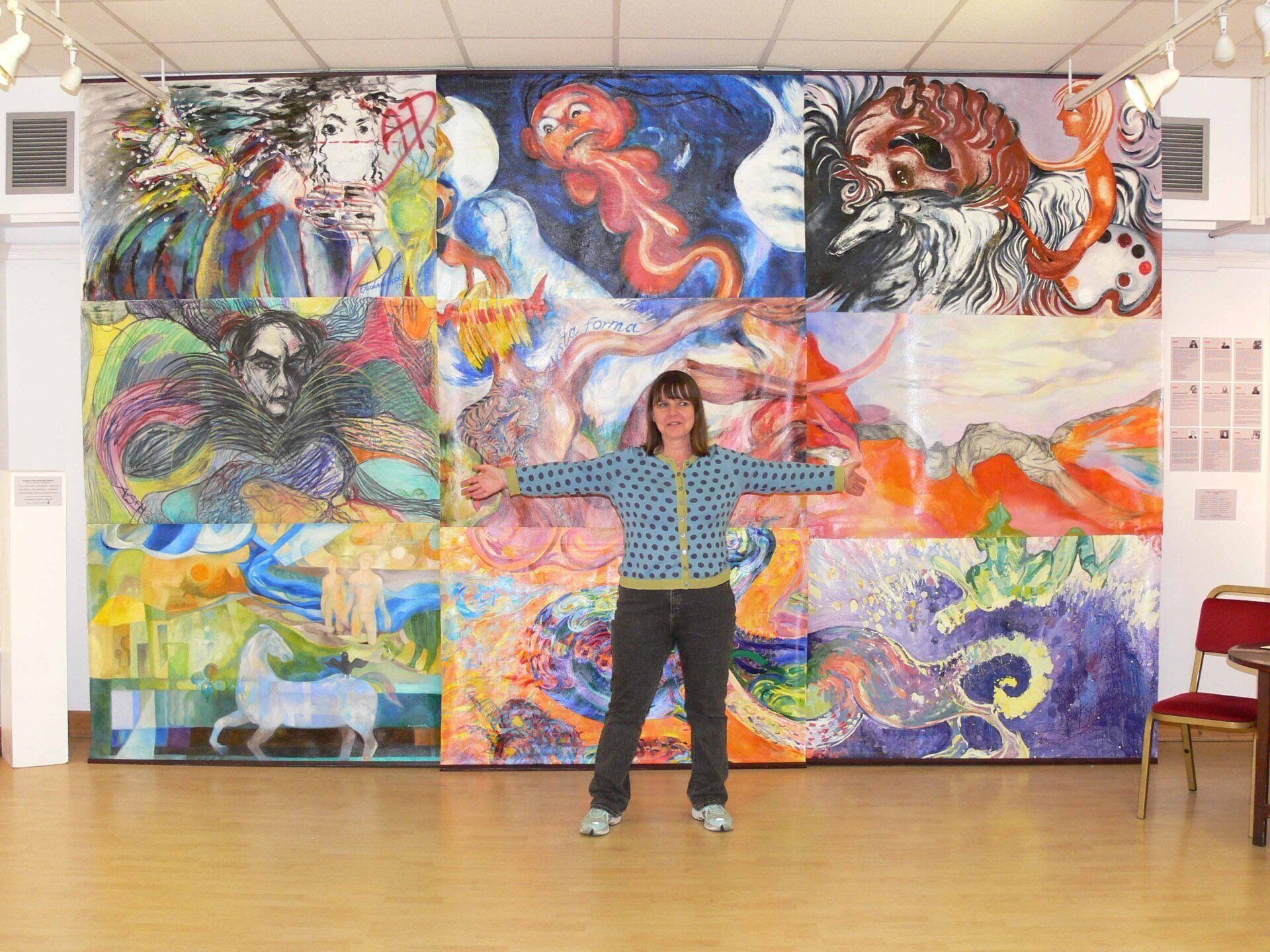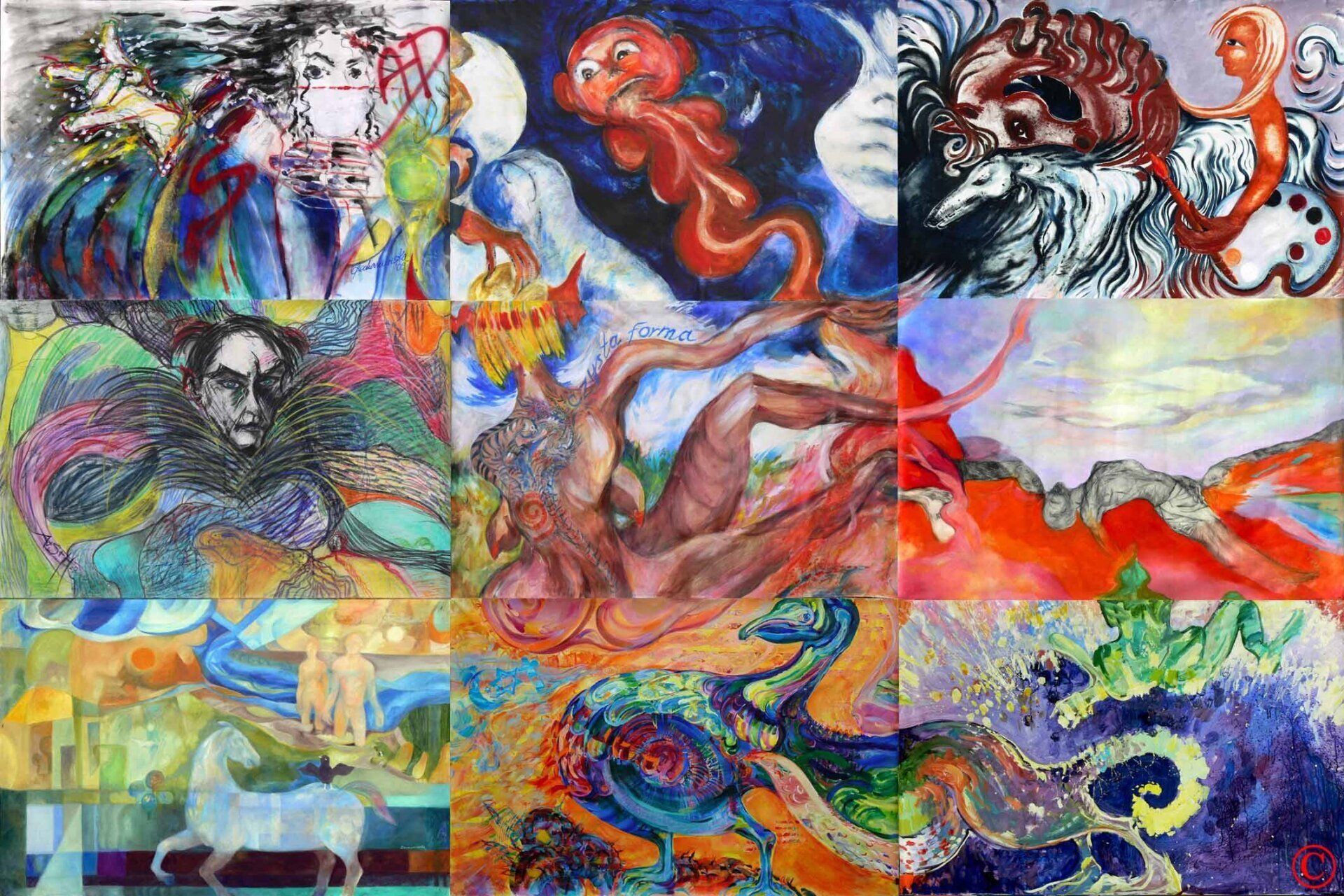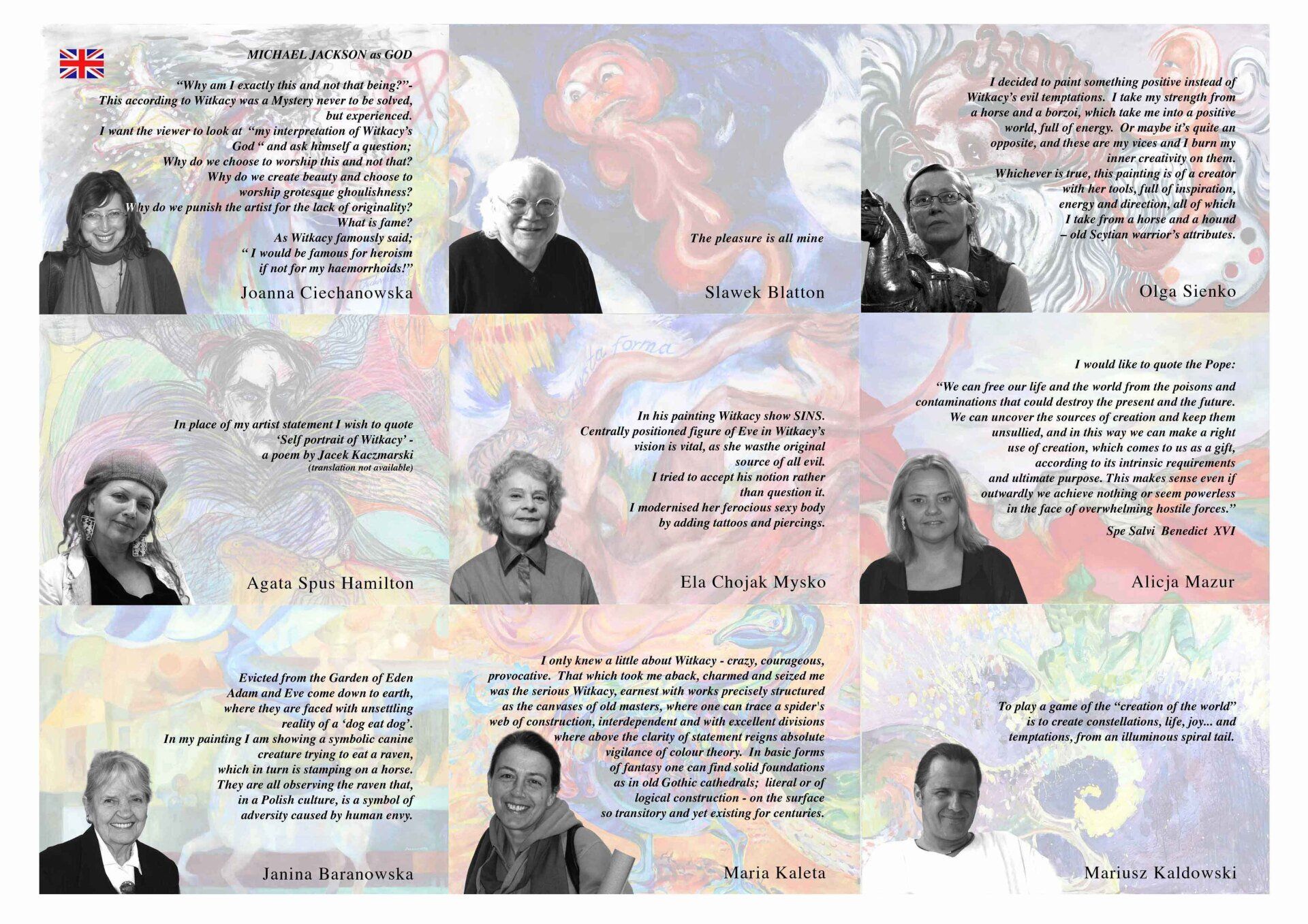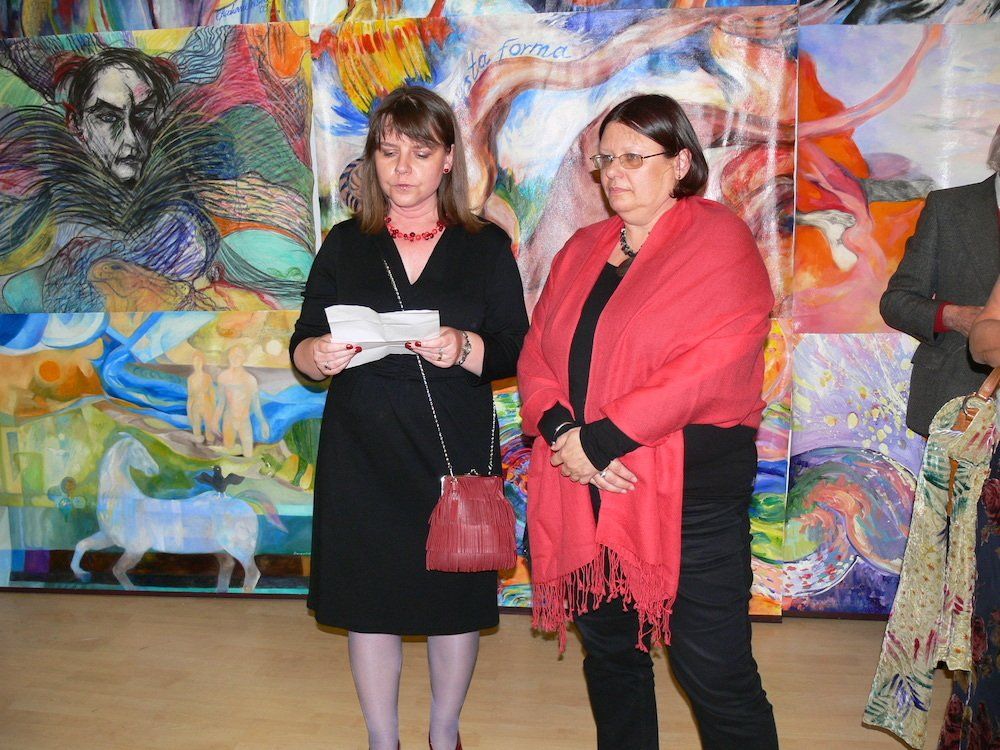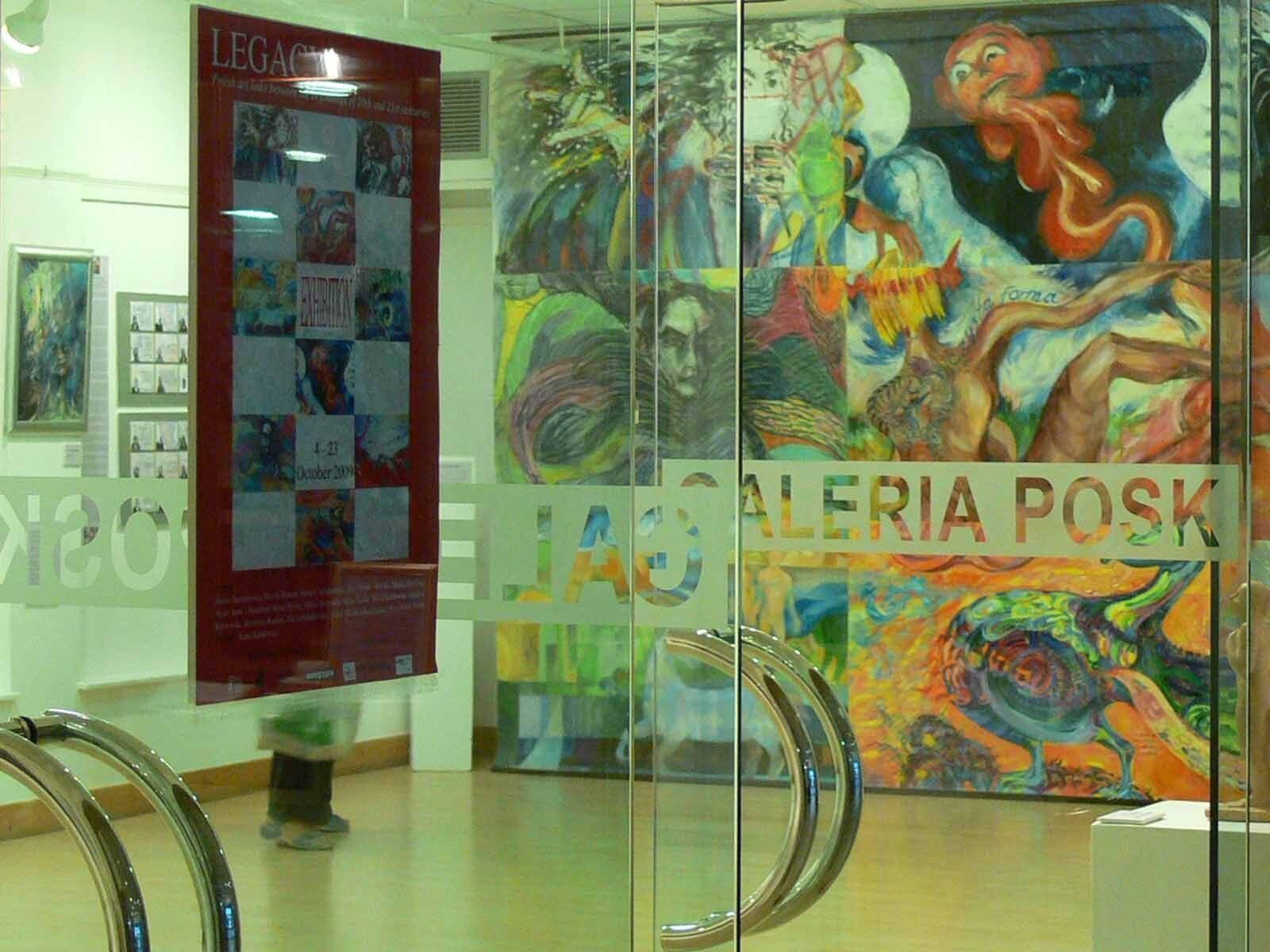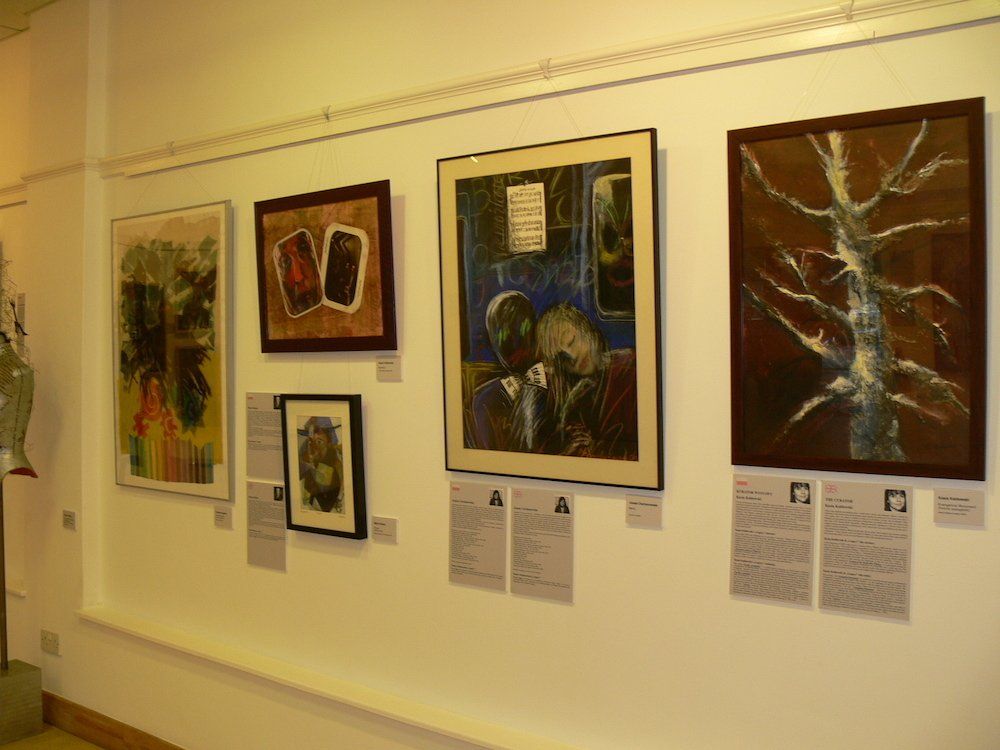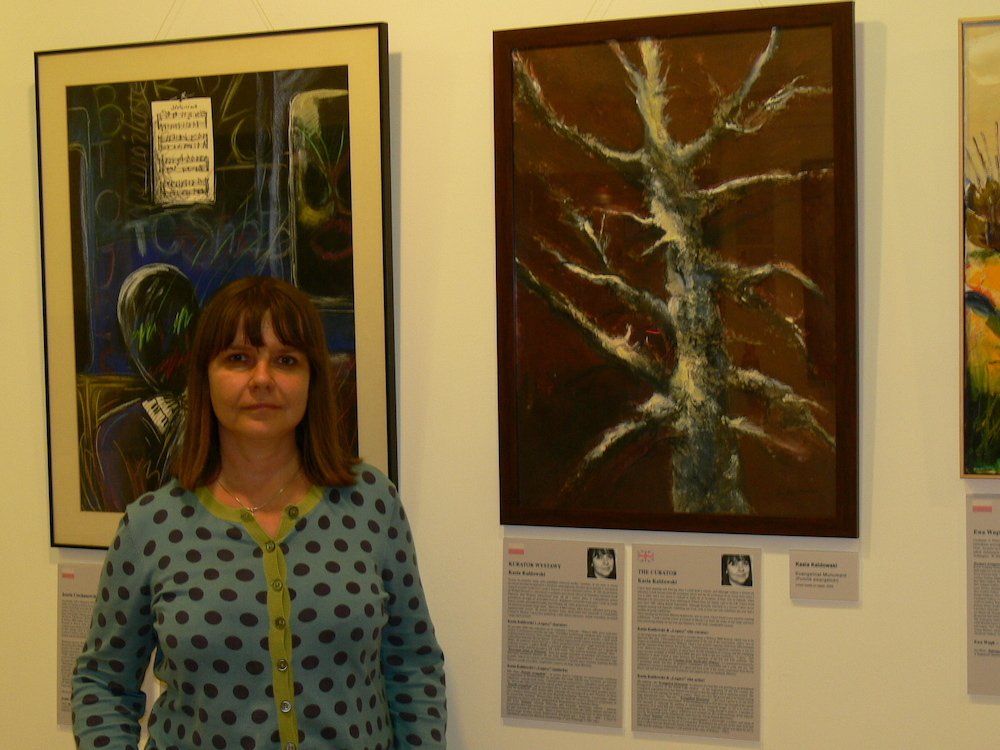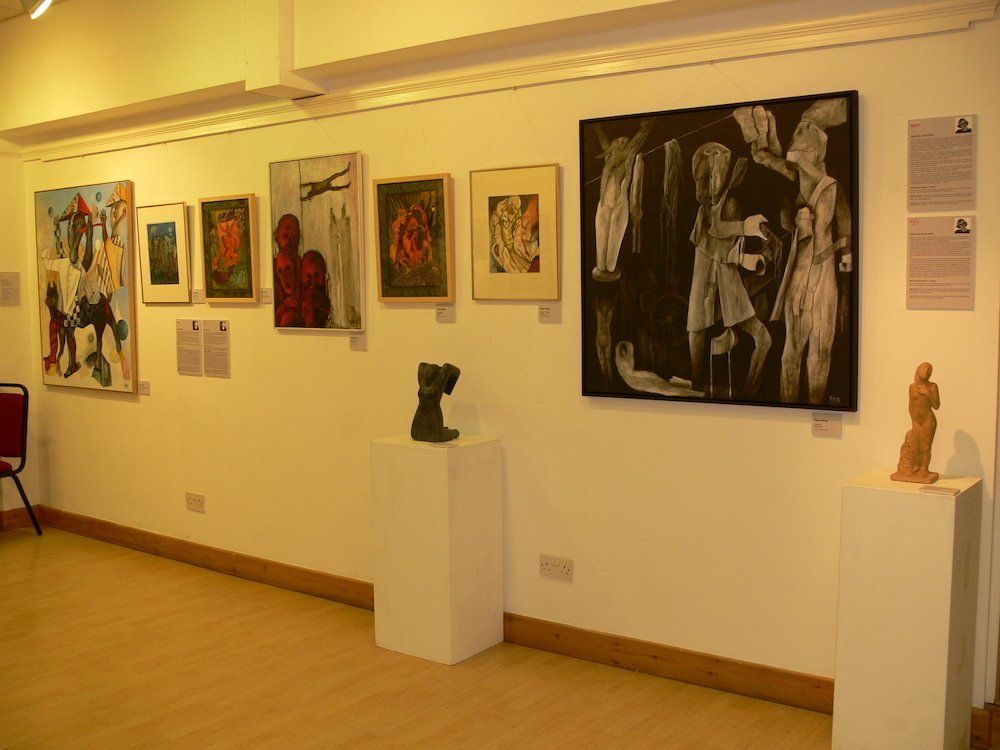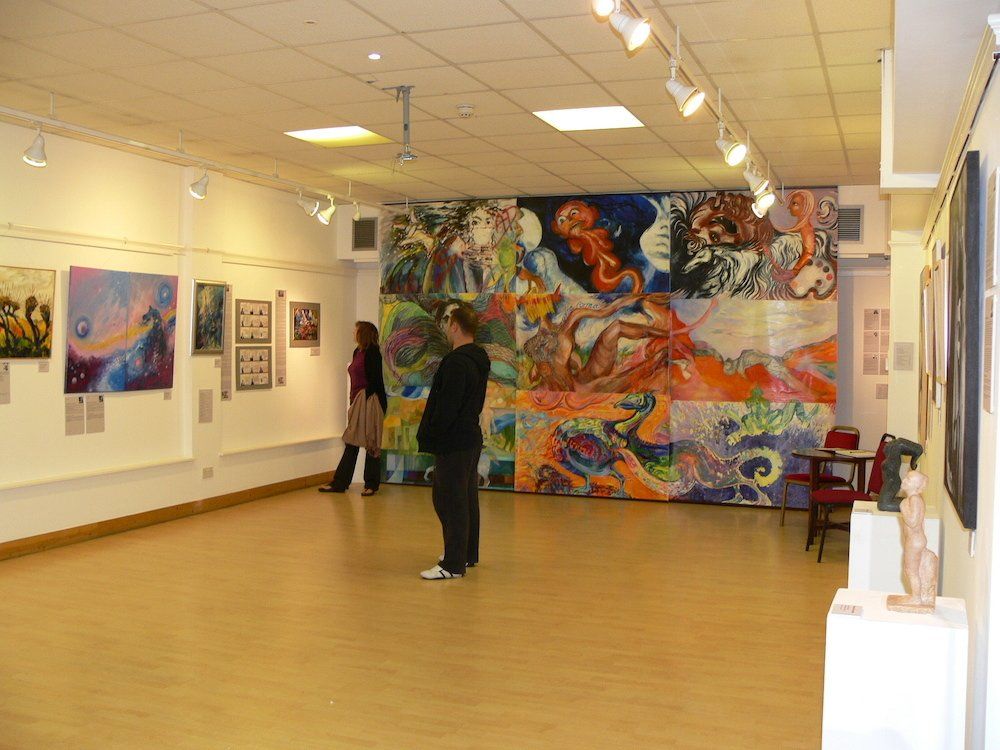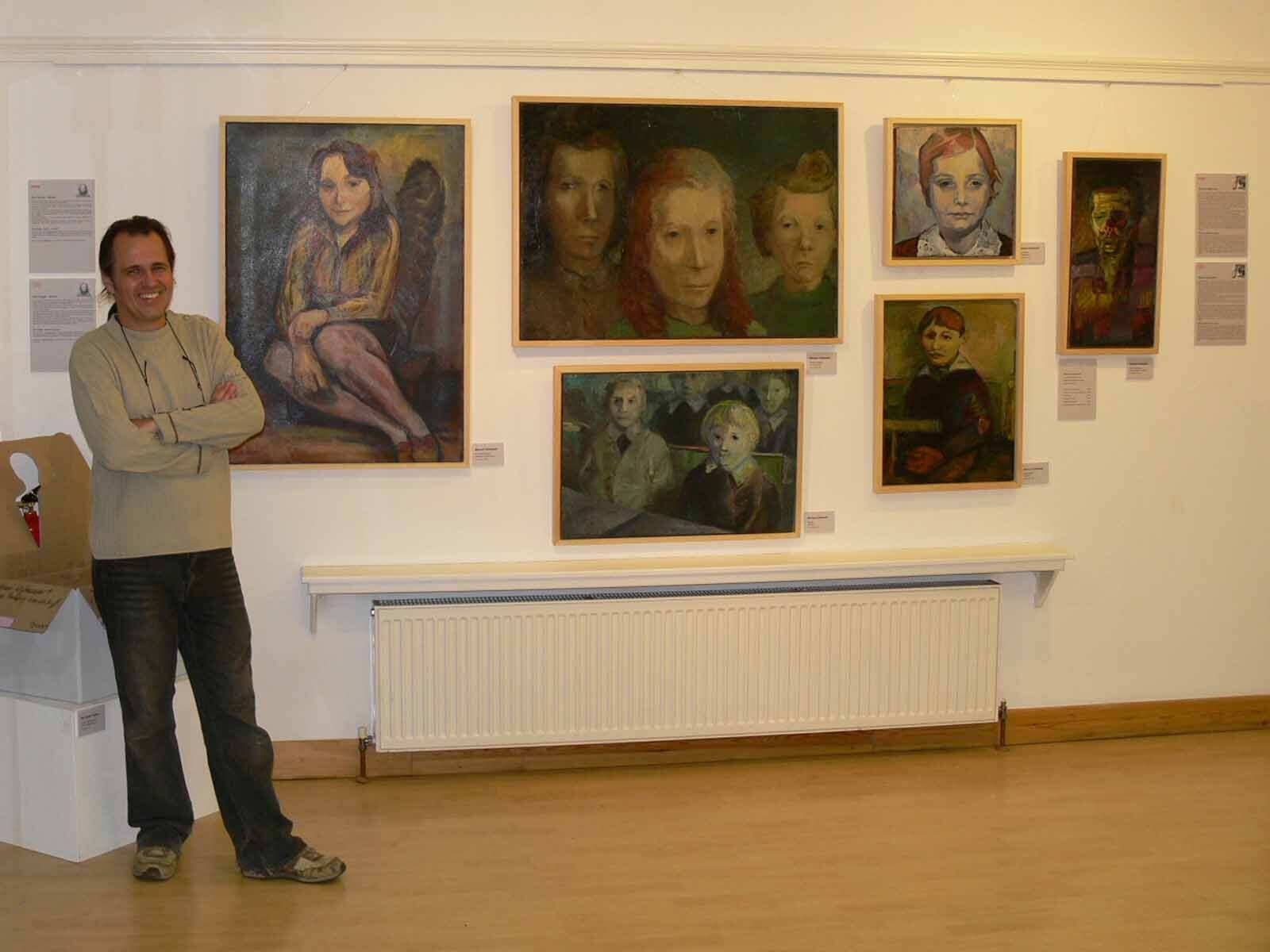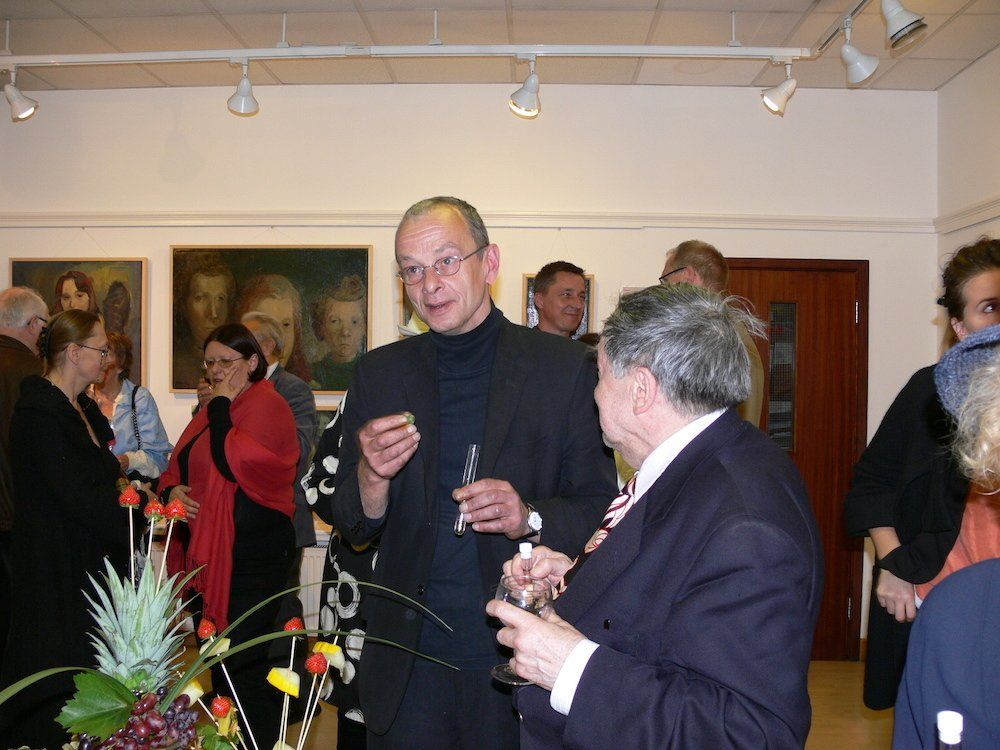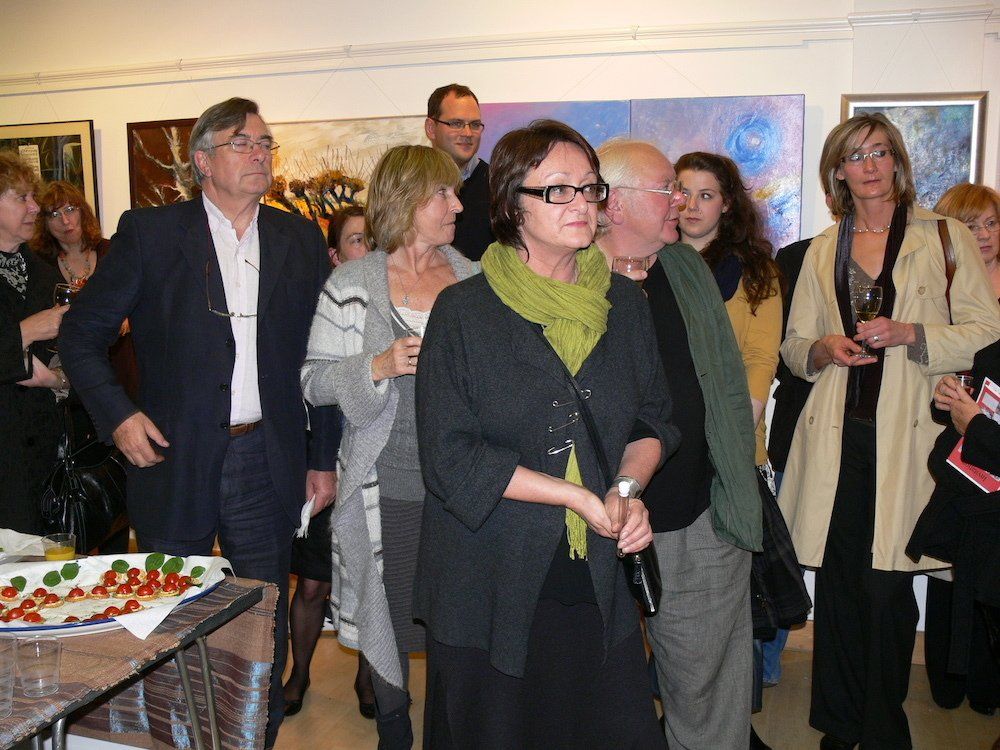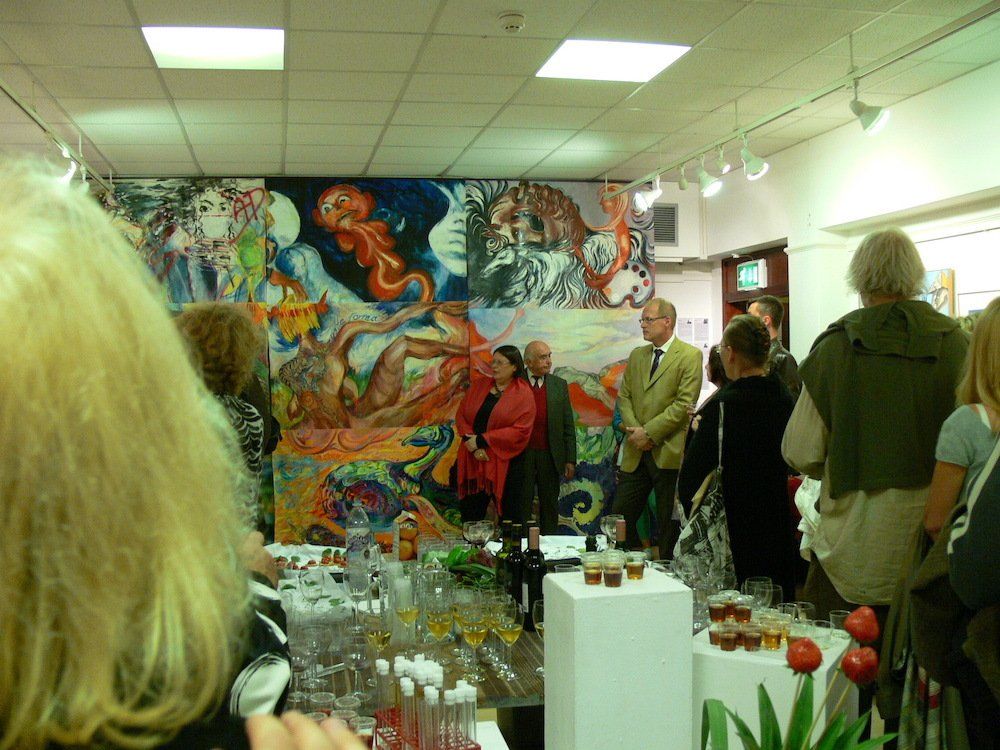Kasia Kaldowski | Curatorial Legacy
Kasia Kaldowski’s curatorial legacy includes projects, exhibitions and cultural collaborations that highlight contemporary art and cross-disciplinary dialogue. This page documents her work as a curator and organiser, showing how curating complements her artistic practice.
The beginnings of the XX century were generally regarded in the Polish art as an era of innovation, an opportunity to search for new art forms, revolutions and rebellions. Just like in our history and the history of the rest of Europe, those years were full of transformations, revivals, good and not so good attempts to create a better reality. Those years were the years of the new beginnings. No wonder it was then that the Polish art benefited from so many new trends, including Young Poland Movement, Formist Movement, Modernism, Symbolism, Expressionism and, to the lesser extent, Futurism and Surrealism. Encouraged by these new opportunities the artists led the rebellious way. Freedom of form and expression became the main motivating factor of creation of art. Innovation, idea and thought overpowered overused aesthetics and patriotism. The artists became the voice of the nation whose need for individual expression took over the need for beauty, although the latter, plus balance and harmony, was in abundance in the works of, e.g. Witkacy, Wyspianski, Przybyszewski, Malczewski, Mehoffer, Chwistek, Wojtkiewicz or Schulz.
Their art, blend of ideology and beauty, was, and still is, a major influence on the creativity of the new generations of the Polish artists. The exhibition that I wish to present to you is an attempt to show the works inspired by that era. Paintings are by the members of the Association of the Polish Artists in Great Britain (APA). They include the artists’ works that illustrate above trends, as well as the paintings specially prepared for this event. Exhibition’s main attraction is a large frieze (3m x 4.5) – ‘Creation of the World after Witkacy’, which is an innovative co-operation between nine artists from APA. This painting has been based on an original ‘Creation of the World’ by Stanislaw Ignacy Witkiewicz (property of and currently at the Museum of Art in Lodz, Poland). New work of art is 9 x larger than the original, divided into separate panels, in which each artist had an opportunity to independently express themselves, and ‘create their own world’. The idea behind the frieze was a promotion of individualism in collaboration and harmony with diverse ideas of others. Witkacy, mainly due to his own diversity, made it possible for us to use joint, and, at the same time, our own distinctive expression, which will be, among others, a tribute to the Polish art from the beginning of XX century by the Polish artists from the beginning of XXI century.
Artists taking part in the exhibition: Janina Baranowska, Slawek Blatton, Joanna Ciechanowska, Manka Dowling, Ela Chojak-Mysko , Agata Hamilton, Raya Herzig, Maria Jaczynska, Maria Kaleta, Krystyna Kaplan, Mariusz Kaldowski, Kasia Kaldowski, Ela Lewandowska, Alicja Mazur, Olga Sienko and Ewa Wnek-Webb.
Curator
Kasia Kaldowski
Legacy - Witkacy’s aftermath
Stanislaw Ignacy Witkiewicz aka Witkacy (1885 – 1939), one of the most prominent Polish artists was a painter, a photographer, a playwright, a novelist and a philosopher as well. He succeed in all of those fields, which, on the face of it, seem so far apart and yet linked by a common idea of a Pure Form – to create a perfect work of art, based on metaphysical sensation, a unity in multitude, to experience the Universe in its purest form.
A concept of the Pure Form was properly defined by Witkacy in 1919, when this theory – ‘New Form in Painting and the Misunderstandings Resulting from Them’ and ‘Theatre’ - were first published. Soon after he painted a great many pictures realising the Pure Form in practice, each of the paintings representing a self-contained plural world of different realities, keeping true to the artist’s philosophy of unity in multitude.
As well as theoretical presumptions and philosophy, in his works Witkacy used his own personal experiences, literature (the trivial and the serious), anything that intrigued or inspired him in other artists’ or writers’ works. He cited their forms and themes, but transforming them with his own characteristics, using the recipe contained in his theory. He wrote about creation of a painting as it
appears at once in the artist’s imagination and is determined by the psyche of the artist, all his early experiences and his entire world of imagination and feeling. The artist bringing his vision into reality is always only this and no other Particular Existence, with exactly this personality and these psychic features. His metaphysical feeling or an immediate apprehension of unity in multitude as such, polarizes itself and individualizes itself in his entire psyche, in order to became an objectified, independent construction of Pure Form, as it is and not otherwise, bearing in it the traces of that very process of individuation, without which there is no genuine work of art.
As a result of these beliefs all of the compositions painted by Witkacy between 1918 and 1925 contain not just a range of motives and forms of a diverse provenance, but also a number of tales drawn into one. One of the best examples of the above is a large oil painting from 1921-22 – the ‘Creation of the World’ (currently at the Museum of Art in Lodz, Poland). It depicts the moment of creation, however, despite its title, it does not ‘quote’ the Book of Genesis from the Bible. This is the ‘Creation of the World’ as according to Witkacy, with the creation of a woman, a source of life as well as sin and demise, as a focal point. With her back turned to us, her huge naked body, large bum cheeks, droopy breasts and long limbs, is centrally placed in the colourful and imaginary landscape. On her fair-haired head, tied with a red ribbon, rests a hand of a bearded old man - God The Creator – a figure taken from a well-known stained glass window by Wyspianski – ‘Stań się’ (‘Let there be Thou’) - in the Franciscan church in Cracow – also depicting the moment of creation.
The central figure is surrounded by a series of scenes containing some odd creatures. Just above her, in the clouds, floats and stares a little red bald ogre. Is it a sperm dragging its tail or is it, yet to be formed, an embryo attached to the woman by twisted umbilical cord? To the right we see three equally disgusting figures, one of which holds a bottle, and to the left, just below God the Creator, appears an exotic head in a large blue turban, with a strong face and upturned moustaches, cradling four greyish little monsters.
The forefront of the composition is an animal world. The middle is taken by a vain and proud peacock, stamping on thorny mines; two cats to the left, eating red berries from a large blue bowls (although one looks more like is throwing up rather than eating); to the right – a green frog holding a blue ball.
Is it a vision of the Paradise? If so, it is full of temptations with the main Temptress – the Woman - in its centre, accompanied by the sins of addictions, gluttony, pride and vanity. The mines and balls, especially the prickly ones, in Witkacy’s art, symbolise drugs. Yet, this painting is extraordinarily visually attractive, expressive and colourful, just as a temptation, to be effective, it has to be ‘pleasing on the eye’...
What is particularly noticeable it’s the cohesion of this composition. The painting is formed by a series of independent figures and self-contained scenes that are linked together into the unity in multitude, postulated so often by the artist. And the vibrant colours – contrasting hues of red with green, yellow with purple, and blue with orange, create a textbook harmony.
Kasia Kaldowski’s idea to divide the painting into panels and share it between a group of Polish artists living in London, to paint their own diverse perceptions of the creation of the world, and at the same time to form one joint vision, is in fact very much in line with Witkacy’s theory and his work. But that’s not all. What was created, in effect, are nine different worlds, the polemics with the artist and his painting, and with the co-painters. All of the panels are accompanied by the artist statements, most of which relate to Witkacy, but also to art or life in general. Some explain their own understanding of the ‘Creation of the World’.
The running of nine different creative minds into each other, and all of them into the persona of the Master, had, in effect, given us a very interesting outcome.
Welcomed is the similarity of some of the parts with the Witkacy’s original and co-entity with free interpretations of the others’, their variations on creativity, creations and the Mystery of Life. The central female figure is still there, modernised however with tattoos and piercings, borrowing from Witkacy’s works, as well as similar inscriptions that he often used, especially in his drawings. ‘I tried to accept his notion rather than question it’ – states the author of that panel, Ela Chojak – Mysko. The female’s supplementary figure of, be it a sperm or an embryo, a little red ogre, is also similar to the original. ‘The pleasure is all mine’ – joyfully states its creator, Slavek Blatton. Enough said.
The figures of God the Father and the exotic face in a turban, however, have been considerably transformed. Joanna Ciechanowska, displaying a perversity worthy of Witkacy himself, substituted God with the image of Michael Jackson, at the same time reminding us that the Existence was a constant mystery to Witkacy, as well as a choice of worship. Then why not worship the late King of Pop?
To interpret her fragment of the ‘Creation’, Agata Spus Hamilton cited a song-poem by Jacek Kaczmarski from the 1980’s that ends with the words, ‘if needed be, I‘ll rid the word of Witkacy’. She is however doing exactly the opposite – she gives us back the artist, placing him below The God (a god?) – Jackson, in place of the mystical exotic figure in a large hat.
The greedy cats had disappeared from the bottom left. They were exchanged with two naked figures with a dog and a horse within a tranquil landscape. A black crow sits on the horse. The vision’s creator, Janina Baranowska, suggests that the dog is about to eat the bird, as once evicted from the Garden of Eden, all living creatures lose their innocence and become lifelong enemies. The artist in effect paints the sequel to
the ‘Creation’ – a synthesis of humanity and a metaphor of its history in general.
The forefront of the composition is, as in the original, taken up by the peacock, rich in the multicoloured feathers with long, spiral tail, and the green frog, calming already stirred emotion with its decorative charm... Maria Kaleta, in all the Witkacy’s madness, managed to find rationalism and constructiveness, and Mariusz Kaldowski introduces ‘cosmic’ background, rightfully spotting the ‘universal galactics of life, joy... and temptations.’ Yet the red sombre landscape above, with naked bodies painted into it, bring back the dramatic accents, Spe Salvi by Benedict XVI, cited by the artist Alicja Mazur, about the need to free our lives and the world from the poisons and contaminations that could destroy the present and the future.
Last but not least, Olga Sienko, in her piece, rebelliously decided to substitute the yellow, tempting with blue bottle creatures, with something positive that gives her energy and inspiration. She painted a fairytale horse, a borzoi and an artist palette, and within all of these she placed herself – a simplified reddish profile image of a woman. Despite it being so different, her fragment, in fact, reflects Witkacy’s plentiful, overlapping forms, and as such is true to the expressionism of the original.
In the arena of the ‘Creation of the World’ the artists conjured up their own worlds, using their own thoughts and their own manners of expressions. Yet the main Witkacy’s principles remains: creativity, skilful adaptation to the given reality and unity in multitude. In their statements that accompany the new ‘Creation’, the blasphemous-ish substitute of God the Creator by a god of the pop culture meets the Pope’s admonition. The philosophical solemnity is contrasted with artistic frivolity. Fascination with Witkacy’s ideas is fuelled even more by the words of the idol of the political transitions of 1980’s – Jacek Kaczmarski. All of the elements create a surprising harmony with each other and with the prototype – the great painting of Witkacy completed nearly 90 years ago. It shows that his legacy could be interpreted in so many ways and his creativity is an never ending source of inspiration.
Anna Żakiewicz
Dr Anna Żakiewicz completed the MA and PhD Diplomas in Art History at the Warsaw University. She has been working at the National Museum of Poland (MNW) in Warsaw since 1982; from 1984 at the Contemporary Graphics and Drawings Department, and as a curator from 1996. She worked with Irena Jakimowicz, organising a large Witkacy exhibition, which took place between 1989 and 1990 at the MNW, as well as putting together a catalogue and writing an introduction paper on his works. In 1997 she was responsible for organising Tadeusz Brzozowski exhibition, including co-writing and editing the album that accompanied it.
She curated a number of Witkacy exhibitions, including one in Barcelona (1994) and in Peterborough (1998). She regularly lectures on Witkacy to her fellow art historians, and is an author of a number of articles and books, mainly on the same subject. She is the co-writer and the editor of the Witkacy collection catalogue (1996). In 1996 she organised an international conference on Witkacy at Muzeum Pomorza Srodkowego at Slupsk, Poland, and collated all the lectures into a tome (2001).

